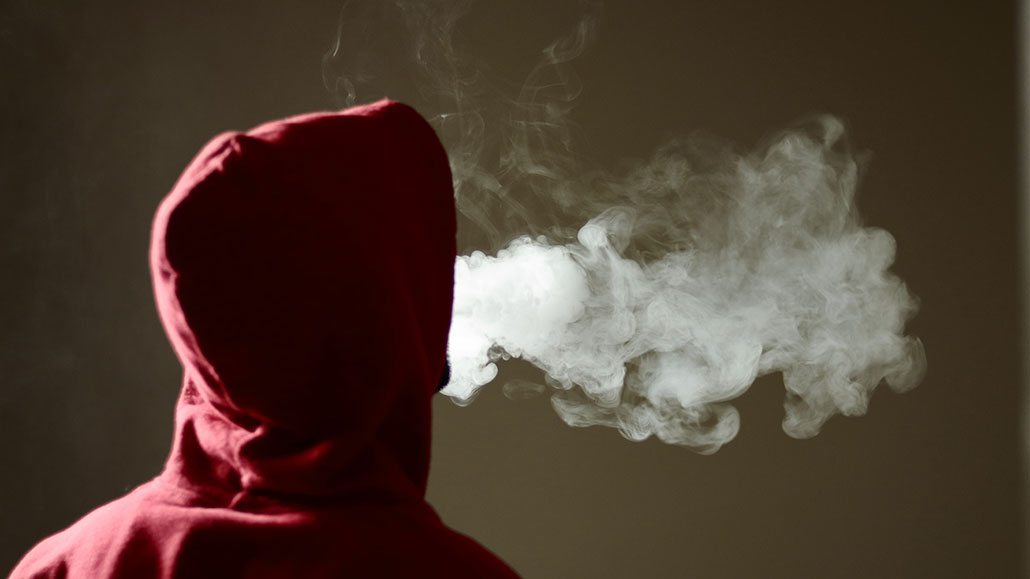Addiction can develop when reward-seeking changes a teen’s brain
In time, the pleasure disappears even as the craving grows

Teens often start using potentially addictive agents, such as alcohol and other drugs, at parties and other social events.
mediaphotos/E+/Getty images Plus
It starts innocently enough. A friend offers you the latest e-cigarette sensation. Or maybe they hand you a beer or a hit of some other drug. You try it once. You enjoy the feeling and figure you’re done. For some people, this once is enough. But others may enjoy the experience enough to try it again. And again. After a while, the pleasure it once brought fades. Instead, a craving for the substance emerges. It starts to grow. The person now seeks out a hit — even when they don’t want truly want to.
This is addiction. And it’s a brain disease.
This disease makes it very difficult for someone to stop certain initially pleasurable behaviors. Those behaviors might involve using nicotine, alcohol or other drugs — even drugs prescribed by a doctor. Gambling, shopping, gaming or social media use can also be addictive. Some people can even become addicted to food in a way that resembles drug abuse.
When someone engages in one of these pleasurable behaviors too often, the brain can change. Other brain networks now turn on a cycle of craving. Soon the behavior is no longer pleasurable. Instead, it is only an escape from the stress the addicted person feels when not doing the behavior.
Addiction often leads to physical and mental harm. For example, nicotine can reprogram parts of a teen’s brain. In some cases, addicting behavior can lead to serious health problems or even death. In others, people may sell off their belongings or abandon friends and family in their quest to satisfy their addiction.

Many addicted individuals claim they can quit at any time. But for someone with a true addiction, quitting that substance or behavior can be impossibly hard. It usually requires help from therapists, along with family, friends and other support groups. And engaging in the once pleasurable behavior later on can lead to a relapse — a seemingly unstoppable craving to do it again and again and again.
What causes casual use to become an addiction? Certain brain circuits create a cycle of craving. People with early-life stressors or a family history of addiction are at greater risk. So are people who start engaging in certain behaviors as adolescents. Even social and cultural pressures appear to play a role.
People who develop an addiction may spend a lifetime fighting it. The good news: Science shows you have control over your chances of becoming addicted.
Starting the cycle
Nicotine is the drug to which the most kids are exposed. It’s found in tobacco and many vaping products. Those who smoke or vape will get a nicotine hit that stimulates their brains. It can give make them feel alert, relaxed or content. People who drink alcohol or use certain other drugs may feel a sense of euphoria — a pleasant intoxication.
That feel-good state is caused by dopamine, explains Dennis McChargue. He is an addiction researcher at the University of Nebraska–Lincoln. Dopamine is a chemical used by nerve cells to communicate with each other. Although the body uses different types of such neurotransmitters, dopamine is strongly linked to positive experiences.
When someone vapes or gets high on alcohol, marijuana or some other drug, their body releases dopamine. This chemical comes from the reward center of the brain, McChargue says. The nucleus accumbens (NU-klee-us Ah-KUM-bens) and dorsal striatum (DOR-sul Stry-AY-tum) are part of this reward center. They play a big role in how much we enjoy experiences. They also are responsible for forming habits. Indeed, scientists refer to addictive substances and behaviors as “habit-forming.”
Early on, the reward center will drive us to repeat a feel-good behavior. Dopamine “gives you a strong [feel-good] boost,” McChargue says. But it disappears pretty quickly, along with those good feelings. And that, he says, “makes you want to get that boost over and over again.”
As someone continues to seek out that boost, their brain starts to change. Neurons in the reward center begin to lose their dopamine receptors. This makes it harder for dopamine-using cells to chat with each other. What’s more, cells that produce dopamine now make less of it. So the dopamine rush keeps getting smaller. That pleasurable feeling is harder and harder to get.
At the same time, another brain region kicks into gear. Called the amygdala (Uh-MIG-duh-lah), it reacts to stress. This part of the brain makes people start to feel what’s known as withdrawal. Symptoms may include irritability, body aches and nausea. A person in withdrawal may feel sweaty and have trouble sleeping. They may struggle to concentrate on anything — except achieving that brain boost again. Only that next hit doesn’t provide the same pleasure. It only reduces the uncomfortable, stressful feelings caused by not having the reward.
Even after physical symptoms of withdrawal have passed, someone who is addicted often fixates on getting another hit or chance for a boost. This is caused by a third brain region. Sitting behind the forehead, the prefrontal cortex is in charge of executive function. That includes organizing thoughts and making decisions. It also includes prioritizing tasks. It even helps control emotions and impulses.
And at this stage of addiction, those thoughts and impulses become laser focused on getting another fix or reward.
Hit to the brain
Not everyone who uses nicotine or drugs or spends a lot of time shopping or on screens becomes addicted. But certain factors put some people at greater risk of this. One of those is genetics. People who face the most risk of addiction may have been born with one or more genes that make their response to pleasurable things especially rewarding.
“If you have addiction in your family,” McChargue says, “you might be more prone to the effects” of a habit-forming drug or other addictive behavior. Two people might drink the same amount of alcohol or take the same amount of some drug, he notes. Yet their experiences may differ. People with a family history of addiction are more likely to experience a stronger high.
The drug and its dose also can affect whether someone becomes addicted. Strong drugs, such as methamphetamine (Meth-am-FET-uh-meen), begin to change the brain after the very first use, McChargue says.
But just as important is how old someone is when they start using. “If you start earlier, the likelihood of becoming addicted later — in your late teens or twenties — is higher,” he says. Why? The adolescent brain is still developing.
“Even though [teens] look like adults, their brain is not at the adult level until their mid-twenties,” explains Lindsay Squeglia. She is a neuropsychologist at Medical University of South Carolina. This Charleston-based scientist studies how the brain and behaviors are related.
Different parts of the brain develop at different times, she notes. The reward center develops early. This underlies a teen’s impulsive behaviors. The prefrontal cortex acts as the brakes on such reward-driven behaviors. But this part of the brain isn’t mature until around age 25.

From early adolescence to early adulthood, the brain is under constant change. The body prunes back gray matter. These nerve cells are responsible for thoughts and emotions. “That’s totally normal,” Squeglia says. The brain keeps pathways that are regularly used and gets rid of ones that aren’t. These are “use-it-or-lose-it connections,” she explains.
At the same time, the amount of white matter in the brain increases. White matter is made up of neurons wrapped in layers of insulation. White matter makes up “the superhighways in the brain,” Squeglia says. Its insulation speeds up connections between distant brain areas and makes for faster messaging. Changes to both white and gray matter make the brain more efficient.
When teens start using substances such as nicotine, alcohol or other drugs, those normal brain changes become altered. Gray matter decreases faster than it does in non-users. White matter increases, but not as much. This disrupts the superhighway connections. The most impacted networks link the reward center and prefrontal cortex. That makes it even harder for the brain to cut back on rewarding activities. And this can lead to addictive behavior later, in adulthood.
“If kids start using alcohol before age 15, they are four times more likely [than those who start at age 20] to develop problematic alcohol use during their lifetime,” Squeglia says. “The earlier you start,” she notes, “the more problematic use [will be] down the road.”
Some brain changes last well into adulthood. This is especially true in people who start using substances as teens. Over time, Squeglia says, adults who struggle with substance abuse have less white matter and gray matter in their brains. One study found that people who used cannabis as teens but stopped as adults experienced mental-processing problems well into their forties. People who waited until they were adults to first use cannabis didn’t have the same problems.
“Delay,” Squeglia now urges. With each year teens put off using alcohol, the chances of becoming addicted go down by 14 percent, she says. Waiting to use other substances is similarly beneficial. That delay can have a huge impact on your future.

The social side of addiction
Many teens experiment with habit-forming substances because their friends or families do. But not every teen faces the same social pressures, notes Priscilla Lui. She is a clinical psychologist at Southern Methodist University in Dallas, Texas.
Friends and parents send messages that affect our behaviors, she says. “But often,” she adds, “we don’t really talk about where those messages come from.” Her research finds that culture — such as movies — can influence how teens think about nicotine and use of other drugs.
Lui studies the social and cultural influences on use of potentially habit-forming drugs. Addiction research hasn’t always matched her personal experiences and observations across cultures, she’s noticed. “The belief has been that people are people and cultural differences are just noise,” she says. But that’s why representation of diverse groups in science is so important, she says.
People use substances, particularly alcohol, for one of four main reasons, researchers found back in the 1990s. They want to cope with stress, to enhance their mood, to try to fit in or to socialize with others. Why someone uses addictive substances can affect their experiences. “People who drink to socialize are more likely to self-monitor and be responsible,” Lui says. They are more likely to stick with a friend and switch to water or eat food to avoid getting too drunk. They’re also less likely to leave a drink unattended. (This can be dangerous since someone can slip a drug into that drink.) In contrast, people who drink to fit in may not keep track of how much they consume. That can lead to serious illness and social problems.
Even where someone grows up can matter. People living in lower-income areas are often inundated with ads for alcohol and cigarettes, Lui says. It can become the norm for people there to then use these substances. These neighborhoods are over-represented by people of color, and that puts them at a disadvantage. “By eighth grade, a lot of people have had exposure to alcohol and even cannabis,” Lui says. Teens who get an early start using substances can set themselves up for long-term problems.
“We need more information,” she says. Researchers need to study how social and cultural factors affect addiction-related behaviors. That will allow doctors to better tailor treatments. What works for one group may be less effective for another, she points out. There may be other risk factors, such as racism or income, that point to which treatment might work best in particular individuals.
Lui and Squeglia are both working to find better treatments, especially for teens with addiction. The motivators for using alcohol or other drugs are different for teens than for adults, Squeglia notes. So adult treatments may not work as well in kids. She’s working to find better ways to prevent the damaging long-term brain changes in teens who suffer from addiction.
The key is to get help early. “Putting a substance in your body makes you more vulnerable to experiencing negative emotions,” McChargue observes. That makes you more vulnerable to wanting to escape from those emotions — and leads you to want to use again. Every time you do this, those negative emotions increase, he says. That makes it harder to stop. That’s why, he says: “The earlier you can get treatment, the better.”
If someone you know has a substance- or behavioral-abuse problem, ask them to seek help. They can reach out to the Behavioral Health Treatment Services Locator (run by the U.S. Substance Abuse and Mental Health Services Administration), or to this hotline: 1-800-662-HELP (4357). And for teens trying to quit vaping, here are some free programs designed just for them.







